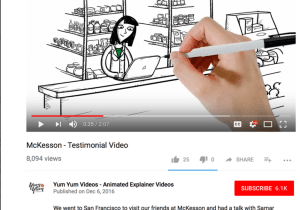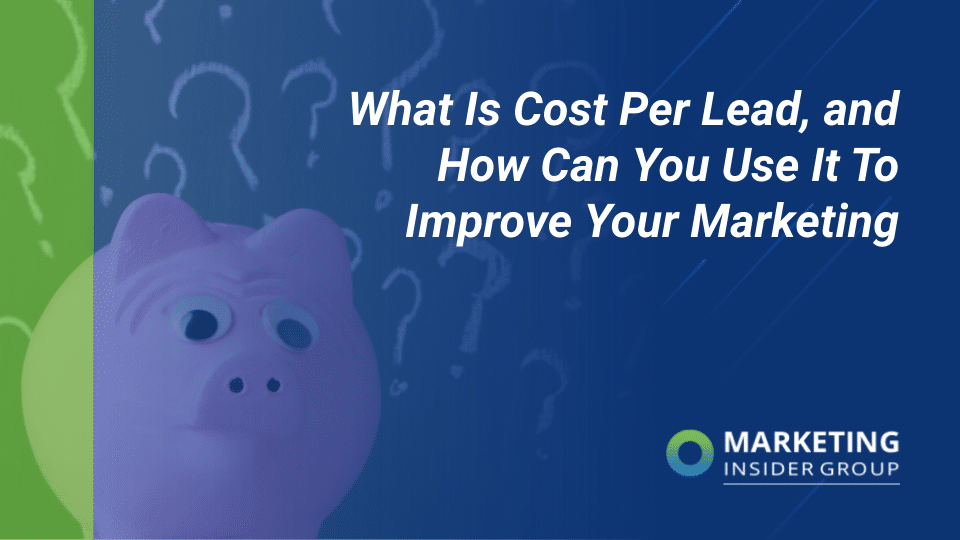
Why and How to Use YouTube to Promote Your Business
Most businesses, when they think social media promotion, they think Twitter, Facebook, Instagram, and the like.
However, YouTube is one of the biggest and most popular social networks in the world – in fact, it’s the second biggest website in the world.
Which of course means huge reach and immense possibilities for increasing awareness of your business, driving more traffic and engagement, and generating more leads.
In this blog post, I’m going to show you why and how to use YouTube to promote your business.
Why YouTube? YouTube in numbers
Before we get into the why’s and how’s, here are some useful stats that will help you understand why YouTube is such a great platform for businesses:
- YouTube is the second biggest search engine in the world, as well as the second biggest website, with over 1 billion registered subscribers
- People watch 1 billion hours of video on YouTube every day
- YouTube reaches more 18-49 year-olds on mobile than any TV channel or cable TV network
- YouTube reaches more 18-34 year olds in the US than any TV network
And YouTube isn’t really showing signs of slowing down, which makes things pretty clear: people of all ages, from all over the world, love watching videos online.
Which, of course, is one of the biggest benefits from a promotional point of view: YouTube is where your audience is. A good YouTube strategy can help you reach more people and improve your results overall.
But, where do you start?
Create a YouTube strategy
YouTube can be more time-consuming than other social networks; after all, it’s one thing to write an update and create images versus consistently creating new video content. The good news is, it’s easier than ever – but before we get into video creation, let’s talk strategy first.
To start with, what do you want to achieve with YouTube and video marketing? What are your exact goals? For example:
- Improving brand awareness and engagement
- Generating more leads and conversions
- Driving more traffic to your website
- Improving sales
Knowing your objectives will help you create the right videos for your channel, videos that will achieve your goals:
What types of videos can you create?
One of the biggest things keeping businesses from leveraging YouTube is that…well, you need to create videos and you’re not sure what. Or how, for that matter.
At the very least, not without spending way too much money and time on creating and promoting videos.
However, it’s actually not that difficult to create quality videos anymore – in some cases, you don’t even need a camera. And when it comes to the types of brand and marketing videos that you can create, there are numerous options for different stages of the sales funnel:
At the top of the sales funnel
If you want to generate more brand awareness, these videos will help you reach those goals:
- Brand videos showcasing your business and your core values
- Educational and how to videos (people love how-to videos on YouTube!)
- Interviews with influencers and thought leaders in your niche
- Animated videos
- Documentaries – like this great example of a content marketing documentary (which is on content marketing!) from the Content Marketing Institute:
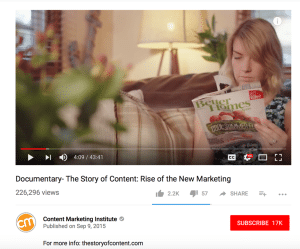
Middle of the funnel videos
Once you’ve caught people’s attention, you can use video to further nurture these potential leads:
- Product videos demonstrating what your product can do for your target audience
- Video testimonials – basically, instead of getting the usual written testimonial from your clients, you can film a testimonial, like Yum Yum did with this video:
Managing your YouTube channel
If you haven’t used YouTube for business yet, you might be surprised to find out that there actually aren’t that many management tools – at least, not like other social networks.
However, especially as you grow, a management tool becomes a must as it helps you track your comments and respond to them, as well as monitor mentions of your brand.
One of the few tools that do this is Agorapulse, which is a social media management tool that works with most major social networks. But, we’re here to talk YouTube management.
One of the best things about it is that you can monitor and manage all of your YouTube comments in one place – and that includes responding to them. Plus, you can pre-moderate comments and decide when and what to publish, and you can save common replies to respond to comments more quickly and efficiently.
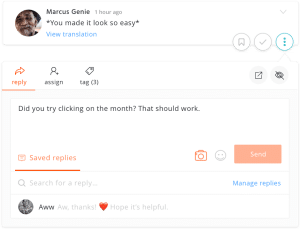
Additionally, you can work as part of a team and collaborate with others on responding to comments. And last but not least, you can monitor your business name on YouTube and make sure to catch any videos or other mentions of your business so you can act as quickly as possible.
Use tools to help you create video content
As I mentioned earlier, video creation for business is more accessible than ever as there are numerous video marketing tools to help you create videos with stock footage, audio, and voice overs.
You can now create pretty much any type of video you can think of, with a tool: animated video, live-action videos, and even stop motion videos.
There are several great options of tools, such as:
- Slidely Promo, for live action videos (i.e. using stock footage)
- Wave, for live action videos (you can easily create the same video for any social network, to help you repurpose your video content)
- Vyond, for creating animated videos

Don’t forget about search engine optimization
You might remember from earlier how YouTube is one of the biggest search engines in the world.
But if you want people to be able to find your videos via search, then you need to optimize your channel and your videos for the YouTube search engine.
When it comes to SEO, there are several factors you need to consider:
- Your channel keywords: pick keywords that represent your business and your video content to help YouTube understand what your channel is about
- Video headline and description: use relevant keywords in both your headline your video description – this too helps YouTube understand what your video is about
- Video tags: like your channel keywords, you need to add relevant tags to each of the videos you post to ensure higher visibility
- Watch time: the more time people spend watching your videos, the better your SEO. Basically, YouTube will promote videos that people watch for a longer time, rather than videos that are opened and closed quickly (it’s very likely assuming that those videos aren’t as good or they aren’t delivering on what they promised in the headline and description)
- Engagement metrics: YouTube also cares about how much engagement (comments, likes/dislikes, shares) your videos are getting – the more, the better!
- Subscriber numbers: YouTube does push bigger channels, but that’s not all; it also looks at how many new subscribers you get immediately after viewing one of your videos
In order to properly optimize your videos – and find good tags and keywords to use – you can use tools like TubeBuddy, a YouTube-certified YouTube management tool, with several video SEO features, like tag suggestions, best practice audits, and keyword rank tracking for YouTube:
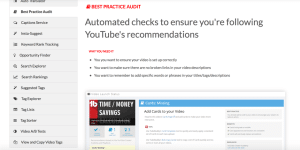
Conclusion
If you want to put together a video marketing strategy that gets results, you should definitely consider YouTube marketing. It will help you reach a much wider audience, improve awareness, and generate more engagement, traffic, and leads.
Have you tried YouTube marketing yet?

